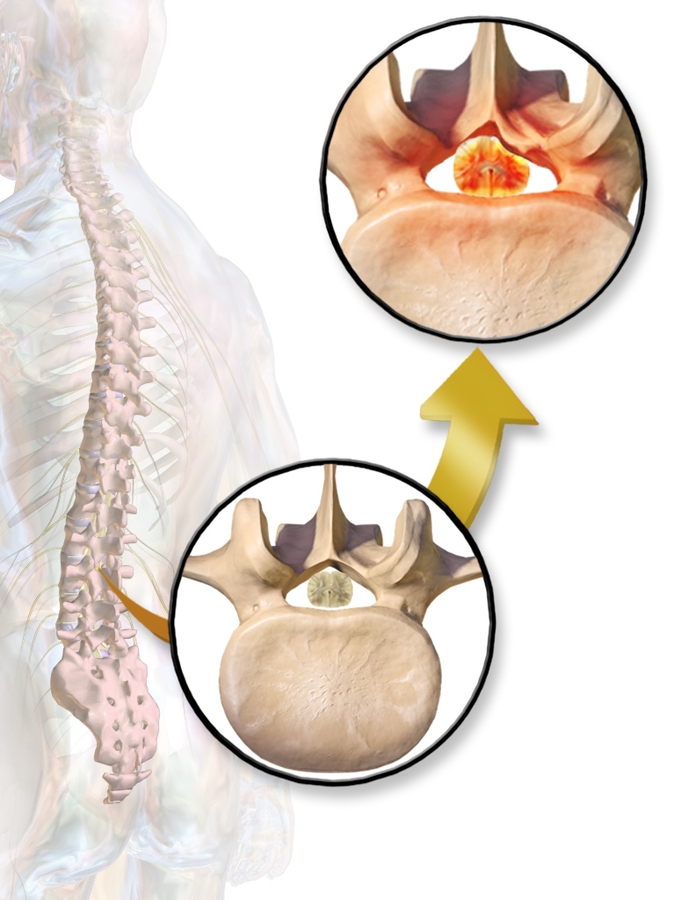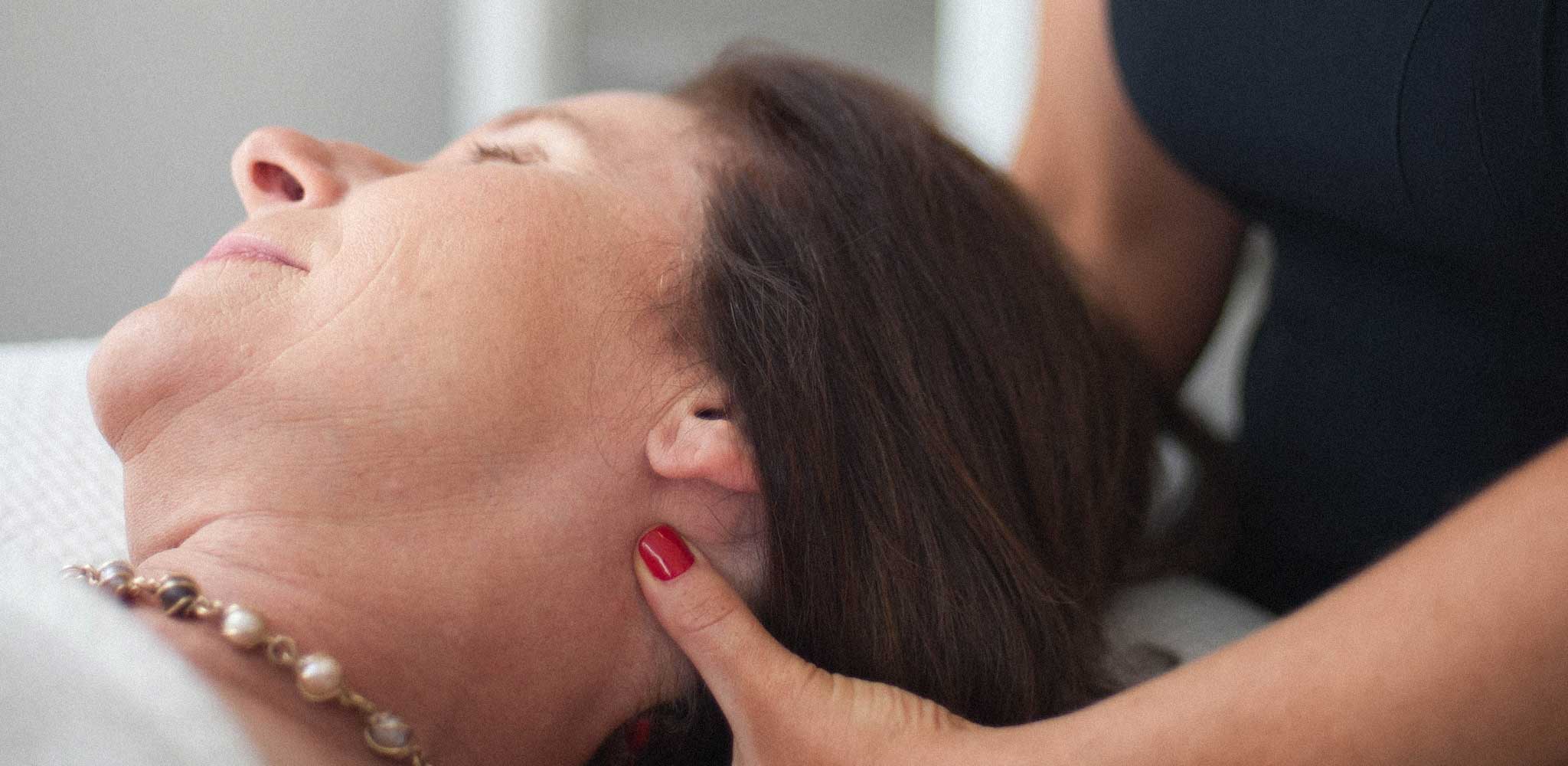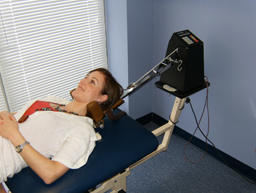nalco group
bone, muscle & joint pain physio
BOOK NOW / WHATSAPP ABOUT YOUR PAIN OR INJURY
- NOVENA 10 Sinaran Drive, Novena Medical Center #10-09, Singapore 307506
- TAMPINES 9 Tampines Grande #01-20 Singapore 528735
- SERANGOON 265 Serangoon Central Drive #04-269 Singapore 550265
Home > Blog > Physiotherapy > Conditions > Spinal Physiotherapy > Spinal Stenosis Physiotherapy
Spinal Stenosis Physiotherapy

Up to 8 in 10 of us (that's 80%!) will experience some form of back or neck pain at some point in our lifetimes. Spinal stenosis can be one cause of back pain and neck pain.
It affects your vertebrae (the bones
of your back), narrowing the openings within those spinal vertebral bones where the
spinal cord and nerves pass through.
What Is Spinal Stenosis?
Spinal stenosis is a narrowing within the vertebrae of the spinal column that results in too much pressure on the spinal cord (central stenosis) or nerves (lateral stenosis). Spinal stenosis may occur in the neck or in the lower back.
The most common causes of spinal stenosis are related to the aging process in the spine:
- Osteoarthritis is a deterioration of the cartilage between joints.
In response to this damage, the body often forms additional bone (called
"bone spurs") to try to support the area. These bone spurs might cause
pressure on the nerves at the point where the nerves exit the spinal
canal.
- Normal aging can result in a flattening of the disks that provide space between each set of vertebrae. This narrowed space allows less room for the nerve to exit from the spinal cord.
- Spinal injuries, diseases of the bone (such as Paget disease), spinal tumors, and thickening of certain spinal ligaments also may lead to spinal stenosis.
In most cases, symptoms of spinal stenosis can be effectively managed with spinal physiotherapy and other conservative treatments. Only the most severe cases of spinal stenosis need surgery or spinal injections.

Signs and Symptoms
Spinal stenosis may cause symptoms such as:
- Pain, numbness, tingling, or weakness in your arms and shoulders, legs, or trunk
- Occasional problems with bowel or bladder function
If you have spinal stenosis in the neck (cervical spinal stenosis), you may have weakness, numbness, and pain in one or both arms and often in the legs, depending on which nerves are affected.
You may or may not
have neck pain.
If you have spinal stenosis in the low back (lumbar spinal stenosis), you may have
- pain
- numbness
- weakness
in the low back and one or both legs but not in the arms. Your symptoms may get worse with walking and improve with sitting.
How Is It Diagnosed?
Because the symptoms of spinal stenosis are often similar to those of other age-related conditions, a careful and in-depth diagnosis including differential diagnosis is important.
Our senior physiotherapists will conduct a thorough evaluation, including a review of your medical history, and will use screening tools to determine the likelihood of spinal stenosis.
We may:
- Ask you very specific questions about the location and nature of your pain, weakness, and other symptoms
- Ask you to fill out a body diagram to indicate specific areas of pain, numbness, and tingling
- Perform tests of muscle strength and sensation to determine the severity of the pressure on the nerve root
- Examine your posture and observe how you walk and perform other activities
- Measure the range of motion of your spine and your arms and legs
- Use manual therapy to evaluate the mobility of the joints and muscles in your spine
- Test the strength of important muscle groups
If you have muscle weakness, loss of sensation, or severe pain, diagnostic tests such as an X-ray or MRI may be needed.
We work closely with physicians and other healthcare providers to ensure that an accurate diagnosis is made and the appropriate treatment is provided.
Research shows that in all but the most extreme cases of spinal stenosis (usually involving muscle weakness or high levels of pain), conservative care, such as spinal physiotherapy, achieves better results than surgery.
how our senior physiotherapists can help

Our overall focus and purpose is to help you continue to
participate in your daily activities and life roles. We will
design a treatment program based on both the findings of the evaluation
and your personal goals.
We will design a specialized treatment program to meet your unique needs and goals.
Your physiotherapy program may include:
Gentle Movement
We may teach you specific movements to help take pressure off the nerve root, which can help alleviate pain.
Stretching and Range-of-Motion Exercises
You may learn specific exercises to improve mobility in the joints and muscles of your spine and your extremities. Improving motion in a joint is often the key to pain relief.
Strengthening Exercises
Strong trunk (abdomen and back) muscles provide support for your spinal joints, and strong arm and leg muscles help take some of the workload off your spinal joints.
Aerobic Exercise
You may learn aerobic exercise movements to increase your tolerance for activities that might have been affected by the spinal stenosis, such as walking.
This might sound like a lot of exercise, but don't worry: research shows that the more exercise you can handle, the quicker you'll get rid of your pain and other symptoms!

We may decide to use a combination of other treatments as well, including:
Manual Therapy
We may conduct manual (hands-on) therapy such as massage to improve the mobility of stiff joints that may be contributing to your symptoms.
Use of Equipment
We may prescribe the use of rehabilitation equipment—such as a special harness device that attaches to a treadmill to help reduce pressure on the spinal nerves during walking.
Postural Education
You may learn to relieve pressure on the nerves by making simple changes in how you stand, walk, and sit.
Pain Relief
We may employ the following to help alleviate pain or discomfort that you may experience:
- cold therapy
- heat therapy
- ultrasound therapy
- radio-frequency Indiba physiotherapy
- computerized spinal decompression traction therapy
Image credit to Blausen.com staff (2014). "Medical gallery of Blausen Medical 2014". WikiJournal of Medicine 1 (2). DOI:10.15347/wjm/2014.010. ISSN 2002-4436.
